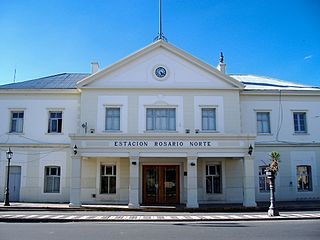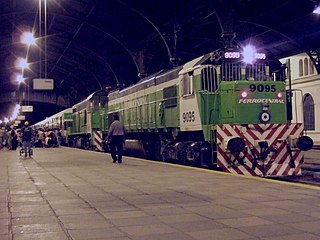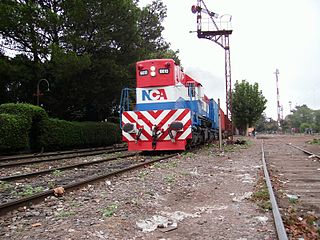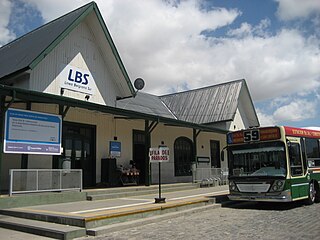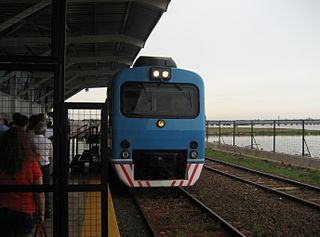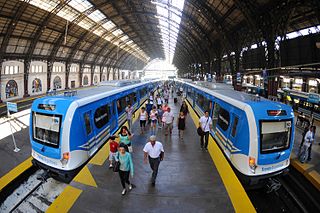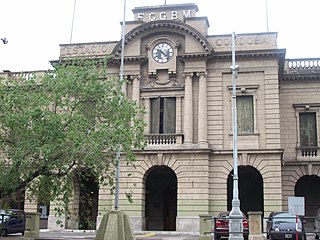 | |
| S.A. | |
| Industry | Rail transport |
| Predecessor | Ferrocarriles Argentinos |
| Successor | NOA Ferrocarriles S.A. |
| Founded | 1997 in Tucumán |
| Defunct | 2000 |
| Headquarters | Retiro, Buenos Aires , Argentina |
Area served | Buenos Aires, Santa Fe, Sgo. del Estero, Tucumán |
| Services | Public transport |
| Owner | Private |
Tucumán Ferrocarriles S.A. (also known for its acronym TUFESA) was a company in Argentina which operated a 1,000 mm (3 ft 3 3⁄8 in) metre gauge railway line between Buenos Aires and Tucumán in Argentina, currently part of Mitre Railway network after nationalisation of the entire railway network in 1948.

Argentina, officially the Argentine Republic, is a country located mostly in the southern half of South America. Sharing the bulk of the Southern Cone with Chile to the west, the country is also bordered by Bolivia and Paraguay to the north, Brazil to the northeast, Uruguay and the South Atlantic Ocean to the east, and the Drake Passage to the south. With a mainland area of 2,780,400 km2 (1,073,500 sq mi), Argentina is the eighth-largest country in the world, the fourth largest in the Americas, and the largest Spanish-speaking nation. The sovereign state is subdivided into twenty-three provinces and one autonomous city, Buenos Aires, which is the federal capital of the nation as decided by Congress. The provinces and the capital have their own constitutions, but exist under a federal system. Argentina claims sovereignty over part of Antarctica, the Falkland Islands, and South Georgia and the South Sandwich Islands.

Buenos Aires is the capital and largest city of Argentina. The city is located on the western shore of the estuary of the Río de la Plata, on the South American continent's southeastern coast. "Buenos Aires" can be translated as "fair winds" or "good airs", but the former was the meaning intended by the founders in the 16th century, by the use of the original name "Real de Nuestra Señora Santa María del Buen Ayre". The Greater Buenos Aires conurbation, which also includes several Buenos Aires Province districts, constitutes the fourth-most populous metropolitan area in the Americas, with a population of around 15.6 million.

The General Bartolomé Mitre Railway (FCGBM), named after the former Argentine president Bartolomé Mitre, is one of the six state-owned Argentine railway lines formed after President Juan Perón's nationalisation of the railway network in 1948 and one of the largest of Argentina. The six divisions, managed by Ferrocarriles Argentinos were later broken up during the process of railway privatisation beginning in 1991 during Carlos Menem's presidency.


